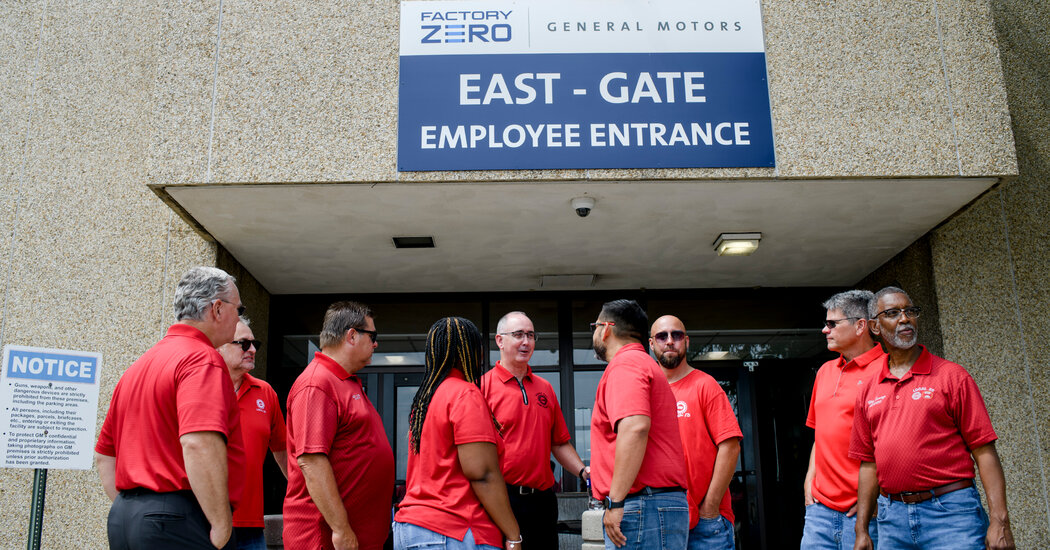Hearing Aids Are More Affordable, and Perhaps More Needed, Than Ever
A year ago, the Food and Drug Administration announced new regulations allowing the sale of over-the-counter hearing aids and setting standards for their safety and effectiveness.
That step — which was supposed to take three years but required five — portended cheaper, high-quality hearing aids that people with mild to moderate hearing loss could buy online or at local pharmacies and big stores.
So how’s it going? It’s a mixed picture.
Manufacturers and retailers have become serious about making hearing aids more accessible and affordable. Yet the O.T.C. market remains confusing, if not downright chaotic, for the mostly older consumers the new regulations were intended to help.
The past year also brought renewed focus on the importance of treating hearing loss, which affects two-thirds of people over age 70. Researchers at Johns Hopkins University published the first randomized clinical trial showing that hearing aids could help reduce the pace of cognitive decline.
Some background: In 2020, the influential Lancet Commission on Dementia Prevention, Intervention and Care identified hearing loss as the greatest potentially modifiable risk factor for dementia.
Previous studies had demonstrated a link between hearing loss and cognitive decline, said Dr. Frank Lin, an otolaryngologist and epidemiologist at Johns Hopkins and lead author of the new research.
“What remained unanswered was, If we treat hearing loss, does it actually reduce cognitive loss?” he said. The ACHIEVE study (for Aging and Cognitive Health Evaluation in Elders) showed that, at least for a particular group of older adults, it could.
Of nearly 1,000 people ages 70 to 84 with untreated mild to moderate hearing loss, half received hearing assessments from audiologists, were fitted with midpriced hearing aids and were counseled on how to use them for several months. The control group participated in a health education program.
Over three years, the study found that hearing-aid use had scant effect on healthy volunteers at low risk of cognitive loss. But among participants who were older and less affluent, hearing aids reduced the rate of cognitive decline by 48 percent, compared with the control group, a difference the researchers deemed “clinically meaningful.”
This subset of participants had lower income and “were older, less educated, with higher rates of diabetes and hypertension,” Dr. Lin said. Because such factors are also associated with dementia, “the people at higher risk really stand to benefit the most,” he said.
In trying to slow cognitive decline, “with a lot of other therapies and treatments, we learn that they can be too little, too late,” he added. ACHIEVE indicates that “they can still see the benefits later in life.” Another three years of follow-up should reveal any further effects of hearing-aid use on both groups.
The researchers also plan to publish findings on how hearing-aid use affects brain atrophy, social isolation, depression and quality of life.
Some experts object to emphasizing a connection between dementia and hearing loss, “as though it plants a dementia seed and the hearing aid keeps it from germinating,” said Dr. Jan Blustein, a medical researcher at the N.Y.U. Grossman School of Medicine.
Because of the stigma of dementia, “people who would potentially get treatment for hearing loss may be less likely to,” Dr. Blustein said.
She added that enabling greater social interaction, with its known beneficial effects on cognition and mental health, is reason enough to promote hearing-aid use. Researchers at the University of Colorado also recently reported that consistent hearing-aid use by older adults was associated with a lower risk of falls.
But acquiring quality hearing aids over the counter, as opposed to more expensive prescription devices through an audiology practice, can still feel challenging.
The F.D.A. reviews “self-fitting” hearing aids, the kind users can customize with a smartphone app; it has found eight brands in compliance with regulations since 2022. A small study recently published in JAMA Otolaryngology found that patients who were given a commercially available, self-fitting hearing aid in a clinical trial could, after six weeks, hear as well as patients fitted with the same device by audiologists.
But not everyone with hearing loss feels comfortable with online sales and do-it-yourself adjustments via apps. And devices that aren’t self-fitting, and instead use preset controls, don’t undergo F.D.A. review at all.
“It’s still Day 1 of the market’s opening,” said Barbara Kelley, executive director of the Hearing Loss Association of America, an advocacy and support group. “The price points are all over. There’s still confusion among consumers.”
Adding to that uncertainty, some marketers have resorted to misleading advertising — some claim that their devices restore natural hearing, for instance. No hearing aid can do that.
“There are bad actors,” said Kate Carr, president of the Hearing Industries Association, which represents major manufacturers. “One company was advertising ‘C.I.A. technology.’” In response, the F.D.A. published a guide for consumers this year.
Still, progress. Self-fitting O.T.C. aids that perform well are now widely available for about $1,000 a pair; prescription hearing aids purchased through audiologists cost several times more.
Perhaps because older Americans don’t know about or mistrust the new over-the-counter devices, or because they still find the price a barrier, initial sales appear modest. (Traditional Medicare doesn’t cover hearing aids; Medicare Advantage plans offering hearing benefits still leave patients paying most of the costs.)
Lexie Hearing, a major manufacturer, sells self-fitting O.T.C. devices for $799 to $999 a pair online and in 14,000 stores nationwide. According to Seline van der Wat, the chief operating officer, the company is on track to sell 90,000 pairs this year.
But Lexie, whose hearing aids are designed and engineered by Bose, is encouraged by its findings that 94 percent of those buyers are first-time purchasers.
“We’re finally able to access a part of the market that was previously unpenetrated because of the costs,” she said. The company projects sales of 260,000 pairs next year and a million per year in 2027.
Other device makers and distributors are ramping up, too. Best Buy announced that 200 more of its stores began carrying O.T.C. hearing aids this summer, and that number will reach 600 this fall. The global vision company EssilorLuxottica plans to introduce hearing aids embedded in eyeglass earpieces late next year.
Several traditional manufacturers have also begun selling over-the-counter devices, sometimes teaming up with better-known consumer companies to promote brand recognition: WS Audiology with Sony, Sonova with Sennheiser. Some experts expect Apple, Sanyo or other consumer-electronics giants to enter the field.
To help guide buyers, HearAdvisor — a company founded by two audiologists and a hearing scientist — has built an independent acoustic lab in Rockford, Ill., to evaluate and rank both prescription and O.T.C. hearing aids for those with mild to moderate loss.
“We’re trying to be the Good Housekeeping seal of approval for hearing aids,” Andy Sabin, a co-founder, said.
After testing about 50 devices to date, HearAdvisor gave its “Expert Choice” award to 13. In general, O.T.C. devices that cost $1,000 or more perform well, Dr. Sabin said, while those sold online today for under $500 “are most often junk.” A few may actually reduce intelligibility.
Wirecutter, a division of The New York Times, has also evaluated hearing aids, and the Hearing Loss Association has planned a series of webinars called OTC 101. The first, on Nov. 1, will feature F.D.A. regulators.
The United States is the first country to develop a regulated O.T.C. hearing aid market, and “the tech companies and the retailers are still experimenting,” Dr. Lin pointed out. He predicts increased innovation and lower prices ahead.
At the moment, though, he said, “it’s still very much a work in progress.”


